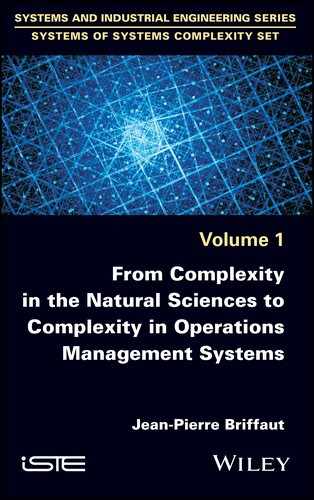Preface
The word “complex” is used in many contexts, be it at the level of social sciences, biology, chemistry and physics or in our professional and private environments. Any time we cannot understand a situation, we try to escape the challenge of feeling doubt and uncertainty, because we have the impression that we lack methods and techniques (in one word, capabilities) to address the issues involved. Within this framework, we decide to give up and convince ourselves that we are right to do so because we are overwhelmed by “complexity”. Complexity is an idea, fabric of our daily experience.
When a phenomenon seems simple to us, it is because we perceive that one object and one action are involved in spite of the fact that reality may be much more intricate. This simplification is enough for making us “cognize” the ins and outs of the situation we experience. In contrast, when a great number of interacting elements are involved, we perceive the situation as complex.
Economic systems and human relationships are complex. Macroscopic situations may appear “simple” because the microscopic underlying states are hidden. We perceive “averages” without knowing the detailed states of the components of a whole.
During the second half of the 20th Century, developments in the thermodynamic theory of irreversible processes, the theory of dynamical systems and classical mechanics have converged to show that the chasm between simple and complex, order and disorder, is much more reduced than thought.
Biology is acknowledged as complex, as it is associated with living organisms whose chemical functioning relies on the interactions of many subsystems. The idea of complexity is no longer restricted to biology and has undergone a paradigm shift. It is invading physical as well as social sciences.
The purpose of this book is to describe the main results reached in natural sciences (physics, chemistry and biology) to come to terms with complexity during the second half of the 20th Century and how these results can be adapted to help understand and conduct management operations.
It is divided into three main chapters, namely “Complexity and Systems Thinking”, “Agent-based Modeling for Human Organizations” and “Complexity and Chaos”.
The purpose of the first chapter, “Complexity and Systems Thinking”, is to give an overview of the way the concept of system has been instrumental in interpreting phenomena observed in natural sciences as well as in emotional behaviors of the human system, as a human being is a system in itself.
The second chapter is devoted to complexity and human organizations. Analyzing existing organizations is a difficult exercise because human relations are intricate. Making them explicit entails the help of a relevant model, including cognitive features. The BDI (Beliefs, Desires, Intention) agent model that will be elaborated meets this requirement.
The third chapter deals with complexity and chaos that is associated with disorder. We will examine how the concepts developed in physical sciences can be used in the field of human organizations for understanding their behavioral evolutions, especially when change management in organizations is pushed by fast-evolving technologies and their consequences in terms of interacting collaboration and cooperation between their human actors.
Jean-Pierre BRIFFAUT
January 2019
